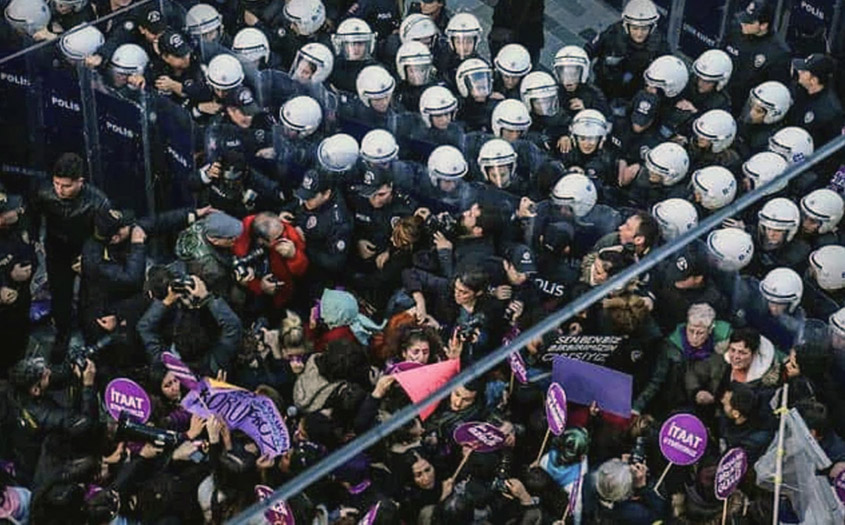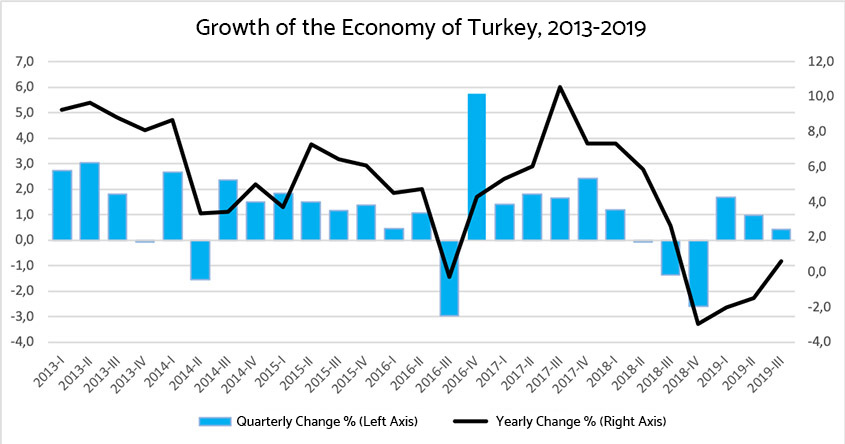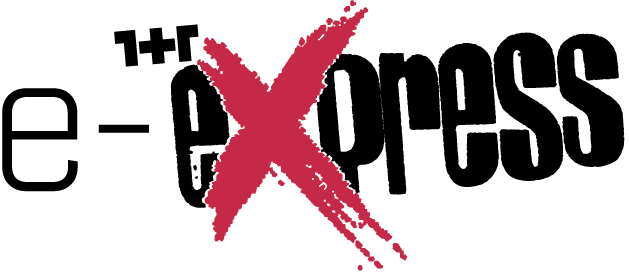We had entered 2019 in the shadow of a series of intersecting crises. The structural crisis, composed of the crisis of the regime of accumulation and the crisis of the state enters a new stage in 2020. The possibility of authoritarian consolidation has emerged for the period from 2020 to 2023.

In this article, I discuss, through introducing two main arguments, the question of whether an authoritarian consolidation is looming in Turkey in the period between 2020 and 2023.
The first one, the historical argument, is related to periodization of the crisis. I will propose that the 2018-2019 crisis should be treated as the last episode of overlapping of the post-2013 accumulation regime crisis and state crisis cycle. In this sense, the focal point of this article is not the internal periodization of the 2018-2019 crisis, but the conjuncture within which this crisis took place.
The conceptual argument is about which conceptual framework and tools we shall use to explain the crisis. Since the peak of 2018-2019 crisis has passed, academic articles about it are gradually surfacing. Naturally, every academic discipline will analyze the subject matter according to its own approach. However, I would like to point out that economic analyses lacking a theory of the state and political analyses unaware of the main features of the capital accumulation model have repeatedly produced inaccurate and insufficient analyses. Therefore, I propose that the concept of structural crisis is suitable for providing a more comprehensive explanation on the matter.
This article could perhaps be perceived not as a perfected proposal, but as a mental exercise, or an invitation to a more systematic discussion.
Crisis of the accumulation regime
I perceive the 2018-2019 crisis as the third stage of Turkey’s post-2001 accumulation regime’s crisis. The first two stages took place in 2014 and 2016. “Accumulation regime” is a concept mostly employed by the Regulation School. Here, I use the concept of the “accumulation regime” –in a slightly flexible manner– as a combination of (i) an economic growth model, and (ii) a mode of regulation of the economy.
Since 2013, Turkey’s economy has been experiencing an accumulation regime crisis. The first component of the accumulation regime, the growth model, began to face bottlenecks in 2013. The reason for this was the deepening of foreign dependency due to the debt-based growth model, and the capital outflow from 2013 on with the Fed’s [the central banking system of the USA] announcement of an increase in the interest rate. In other words, the conditions that created the AKP’s so-called ‘economic miracle’ in the period from 2002 to 2007 and the conditions that created the crisis of that same miracle in the post-2013 period are the same.
When we bring together the crisis of accumulation and the crisis of the state, we encounter the “structural crisis”, a concept used by Nicos Poulantzas. The unique aspect of a structural crisis is the combination of an economic crisis and a political crisis. The most significant feature of the crisis we are currently experiencing is the overlap of the state crisis with the accumulation regime crisis.
The second component of the accumulation regime crisis is the change in the mode of regulation. Mainly after the global financial crisis that broke out in 2008, but more specifically after 2013, the mode of regulation in Turkey was, once again, politicized. The structure of technocratic regulation, valid from 2002 to 2013, centred on inflation targeting and based on central bank independence and the existence of independent regulatory bodies, was changed in the period after 2013 with the abolition of the independence of the regulatory bodies, or rendering their autonomous existence meaningless, and the termination of the practice of the independence of the central bank.
This is, on the one hand, a result of the failure to overcome the impact of the 2008 global crisis, or in other words, the “crisis of crisis management” on a global scale. The framework of neoliberal governance is increasingly failing to respond to current problems. However, in addition to this global context, we need a further concept to explain better this re-politicization that has taken place in Turkey, and that is the crisis of the state.

Crisis of the state
The crisis of the state, as a concept, is used not only to describe a change in organization but also to explain tensions/cracks/clashes within the power bloc. Even though in the post-2001 period, the state crisis began with the presidential election held in 2007, the year 2013, along with the crisis of the accumulation regime, became a year when the state crisis also intensified.
The first step of the state crisis happened in 2013 with the Gezi Resistance, which shook the neoliberal conservative hegemony of the ruling power bloc. The AKP government staggered at first, but the resistance was violently repressed a short while later. The second step in the state crisis was the commencement of the struggle between the two dominant groups in the ruling bloc of the “new Turkey” on 17-25 December 2013. Finally, in 2015, the third stage of the state crisis took place when the AKP failed to secure its absolute majority for the first time since 2002.
The contraction cycle from 2013 to 2018 has ended. The global financial cycle progresses as the symmetrical opposite of the global economic cycle. In other words, tendencies to stagnate or contract in the global economy lead to central banks in core capitalist countries to implement expansionary monetary policies, and this, in turn, brings about the orientation of capital flow towards emerging market economies like Turkey.
Following these three developments, and along with the phase from 7 June to 1 November 2015, AKP circles sought to overcome the state crisis with authoritarian methods. This also meant the emergence of a new configuration within the power bloc. The AKP government adapted the Kurdish issue in line with this new situation, both in Turkey and beyond (in Syria). In due accordance, cadres were changed within the state and new alliances in the power bloc were established.
The coup attempt that took place on 15 July 2016 was the latest round in the fight inside the power bloc. Under the State of Emergency [OHAL] regime that was declared in its immediate aftermath, and following the referendum held in 2017 with the support of the MHP, the transition to the Presidential Government System was completed with the election held in 2018. This also meant the finalization of the attempt to overcome the crisis of the state through authoritarianization. In the latest state of affairs, it appears that in the new combination of top-level state managers, Gülenists have been replaced by nationalists and representatives of other Islamic oriented groups.
Structural crisis
When we bring together the crisis of accumulation and the crisis of the state, we encounter the “structural crisis”, a concept used by Nicos Poulantzas. According to Poulantzas (2008) [1] the unique aspect of a structural crisis is the combination of an economic crisis and a political crisis. The most significant feature of the crisis we are currently experiencing is the overlap of the state crisis with the accumulation regime crisis. The quarterly economic recession periods that develop in three stages in the graph below (2014-II, 2016-III and 2018-II-III-IV) can also be seen as reflections of the state crisis (in other words, authoritarianization) on the economy.
The reader may ask: How helpful is it to go into such detail in the definition of crisis in explaining the current developments? I won’t, of course, claim that this framework provides a magical formula that explains everything. Allow me to limit myself by pointing out the three benefits of this sort of formulation.

First, if we look at the process using the concept of structural crisis, we can avoid the simplicity of explanations based on the singular causation. As an example to this type of explanation, I could mention the widespread argument in opposition circles that “the reason of the crisis is a lack of democracy”.
Second, understanding the dimensions of the continuing structural crisis will provide us with an idea about the dynamics of a possible post-AKP “democratization” process.
Finally, if we can carefully assess what kind of incentive structures the conjuncture of structural crisis forms for both the power bloc and dependent classes, we can develop healthier forecasts on the basis of the course of the regime.
On the basis of this outlook, I believe that we need to start discussing the question of whether the authoritarian consolidation is looming in Turkey or not.
The end of the contraction cycle
In an assessment I made in June 2019, I had pointed out that the conjuncture of structural crisis had caused a decrease in the AKP’s electoral support and that this, in turn, had led to the erosion of its relative autonomy in the power bloc made up of (i) bureaucracy, (ii) large capital groups and other capital fractions, and (iii) political parties, and predicted that the “mechanics of an AKP loss” may have started to operate. Since then, a counter-tendency has also begun to operate: The global financial cycle has entered into a stage of expansion. This means that the contraction cycle from 2013 to 2018 has ended.
The global financial cycle progresses as the symmetrical opposite of the global economic cycle. In other words, tendencies to stagnate or contract in the global economy lead to central banks in core capitalist countries to implement expansionary monetary policies, and this, in turn, brings about the orientation of capital flow towards emerging market economies like Turkey.
The course of the structural crisis may open the door for an authoritarian consolidation for the new regime, however the regime is still far from having overcome its fragilities. It is possible for the credit expansion cycle in the economy of Turkey to continue in 2020 and for economic growth to turn positive next year because of the base effect.
This carries vital importance for countries that have a dependent financialization model, like Turkey. If the global conjuncture in 2019 had been a repeat of 2018, we would now be speaking of a much more severe contraction regarding Turkey’s economy. In other words, with the global conjuncture rushing to help, the AKP’s luck has turned once again. This development also enabled the policymakers to postpone the crisis without having to seek an IMF agreement. The global conjuncture not only enabled a postponement of austerity measures, but it also enabled the credit expansion in the third quarter of 2019 to reach the levels of the credit expansion within the framework of 2017’s “escape to the future” strategy.
Reinforcement of apparatuses of repression
Two interrelated, significant developments took place following the June 2019 local election. First, the government was able change the political agenda by initiating a cross-border operation [into Syria] and distracted the public attention from the economic crisis. The international political conjuncture that made the operation possible in the first place once again revealed that the “global interim regime” was taking deeper hold.
The second critical development was the breakdown of the flexible togetherness of the opposition that had succeeded in pushing back the AKP-MHP alliance at the local elections. The cross-border operation also served towards this breakdown, and the criminalization of the HDP and the splitting of the opposition bloc began to be perceived as the only path for the AKP, as its share of votes continues to drop, to remain in power. This necessity faced by the AKP, in terms of the stage that the attempt to overcome the state crisis through authoritarianization, opened the door for an authoritarian consolidation.

Put simply, authoritarian consolidation is a concept used to express the way in which an authoritarian regime reinforces itself and becomes stable. There are certain requirements for authoritarian regimes to consolidate themselves. In the narrow sense, the authoritarianization process is an institutional restructuring process. Enabling the functionality of the new institutional architecture, which the new regime has developed by trial and error, constitutes a critical stage for authoritarian consolidation. Another requirement would be the development of the resilience of the authoritarian regime and its problem-solving capacity. Overcoming the 2018-2019 economic crisis without having to implement an IMF program is an important step for authoritarian consolidation. A further strengthening of apparatuses of repression forms another component of authoritarian consolidation.
There is also a further, important condition: The harmony between the components of the power bloc must be sustained for an authoritarian consolidation. The position of large capital groups, which helped enable the AKP’s authoritarization project, in the authoritarian consolidation process becomes critical. The tension that erupted last May between Erdoğan and TÜSİAD told us that the bargains between these two actors were still continuing.
Two fundamental questions will shape the period from 2020 to 2023. The question for the government will be, “How can the newly-established regime be consolidated?” For the opposition, the question will be, “How can this attempt at authoritarian consolidation be reversed?”
New tax regulations introduced in November by the state in order to curb budget deficits were met with a strong reaction from TÜSİAD. Therefore, we can see that the consensus regarding the direction of the economy has not yet been fully formed.
The course of the structural crisis may open the door for and authoritarian consolidation for the new regime, however the regime is still far from having overcome its fragilities. It is possible for the credit expansion cycle in the economy of Turkey to continue in 2020 and for economic growth to turn positive next year because of the base effect. However, even the most optimistic forecast predicts a 2020 growth of around 3%. A 3% growth, in consideration of both the increase in workforce and the current unemployment stock, is not a growth rate that will rapidly reduce unemployment.
A “social crisis/depression” caused by an increase in unemployment and poverty because of the potentially low performance of the economy in 2020 will mean that the AKP’s electoral support will continue to melt away, and that may mean that the AKP’s position within the power bloc will weaken further.

The three advantages of the government
Two fundamental questions will shape the period from 2020 to 2023. The question for the government will be, “How can the newly-established regime be consolidated?” For the opposition, the question will be, “How can this attempt at authoritarian consolidation be reversed?” The government has three advantages.
The elimination of organized labour as a result of the model implemented after the 2001 crisis is the most significant development that paves the path for authoritarian consolidation. This was realized through reforms in the labour market and privatizations in the period from 2002 to 2007. Therefore, the period from 2002 to 2007 must be seen, not as a period of democratization when military tutelage was forced back, but as a period that wiped organized labour off the stage of politics, and therefore paved the path for authoritarian consolidation. Those who ask, ‘What difference does it make if organized labour is part of the picture?’ may wish to recall the 1990s of Turkey where working class was able to stop the privatization programme.
The second advantage of the regime is that the nationalist-conservative ideology that forms the cement of the bloc in power can also be easily used, whenever necessary, to split the bloc in opposition. Therefore, the main strategy of the government in the authoritarian consolidation process will be, just like in the period that followed the 2019 local elections, to criminalize the HDP, and if possible, add the CHP to this as well.
The third factor creating the possibility for the government’s authoritarian consolidation is the global economic crisis conjuncture. However, I state this with certain reservations. Reactions in core capitalist countries in the aftermath of the 2008 crisis had prepared the conditions for high growth rates in countries like Turkey. Turkey experienced a similar process in 2019. There is no a vibrant economic growth this time, however, a crisis that could have been much deeper has been evaded with only three quarters of an economic recession. How things will progress from this point on depends on developments in world economy in 2020.
Possibilities, boundaries
We may wish to remember that during the global economic crisis of 2010-2013, Turkey registered growth rates of 8% and higher. If this were not the case, the 2010 referendum might not have produced the outcome the government wanted. This simple example shows how important developments in the world economy are for a dependent country like Turkey.
If we pay close attention, we see that the advantages of the government stem not from its own positives but the opposition’s negatives. In other words, an attempt at authoritarian consolidation can be completed only thanks to the (mistakes of the) opposition. The fact that the government must split the opposition bloc in order to fulfil its aim of authoritarian consolidation can also be seen as an advantage for the opposition to ward off the attempt at authoritarian consolidation.
If the question for the opposition was not “How can this attempt at authoritarian consolidation be nullified?” but “How can conditions for democratization be established?” then it would be necessary to talk about many other things, but I will not go into that here.
Let me end by underlining this: Nullifying the attempt at authoritarian consolidation is the necessary condition for any attempt at democratization, but it is not the sufficient condition.
Translated by Nâzım Dikbaş





